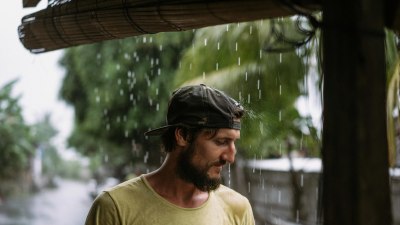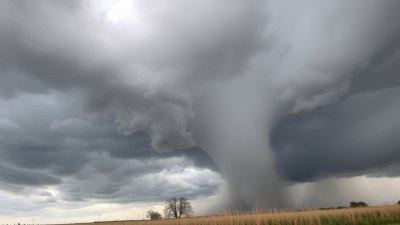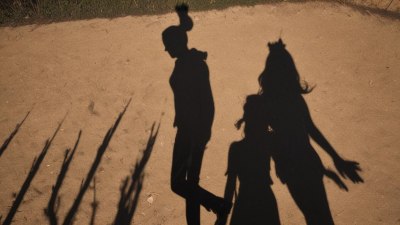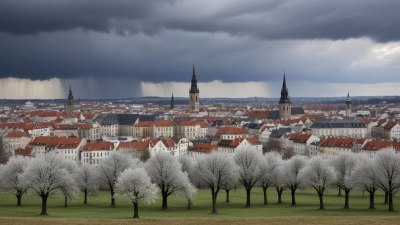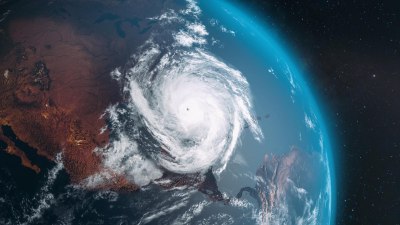Why the Wind Is a Master of Dramatic Timing
Explore the fascinating reasons behind the wind's uncanny ability to create suspense and drama with perfect timing in nature and storytelling.
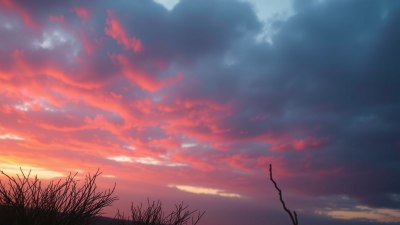
The wind, an invisible yet powerful force, has long captivated humanity not only for its physical effects but also for its mysterious timing and dramatic presence. Whether rustling leaves, whipping through trees, or howling at night, the wind often seems to enter the scene exactly when tension needs to increase, a natural maestro of suspense and surprise. This article delves into why the wind is considered a master of dramatic timing, combining science, nature's rhythms, and cultural perceptions to reveal the underlying reasons behind this phenomenon.
The Nature of Wind: An Overview
Wind is the movement of air caused by differences in atmospheric pressure, which in turn stem from uneven heating of the Earth's surface by the sun. As air moves from high-pressure to low-pressure areas, it creates a flow we experience as wind. This flow is not constant but fluctuates, influenced by geographic features like mountains, valleys, and bodies of water, as well as by weather patterns. These fluctuations create an inherently dynamic and unpredictable character to the wind.
Because of its variability, wind rarely offers a uniform experience; it can be calm one moment and gusty the next. Its erratic behavior naturally lends itself to moments of surprise and heightening of tension when the environment seems otherwise still or quiet. This intermittency is crucial for what we interpret as 'dramatic timing.'
Scientific Mechanisms Behind Wind Patterns
The timing of wind gusts and calms is influenced by several scientific factors. Diurnal heating cycles cause winds to change predictably throughout the day in many regions; for example, sea breezes often strengthen in the afternoon as coastal land heats up relative to the water. But beyond these broad cycles, turbulent eddies and microclimates introduce smaller scale variability. This means that wind gusts can strike seemingly at random, creating moments of sudden impact.
Moreover, the interaction of wind with terrain causes phenomenon like wind shear and lee waves that can suddenly change wind strength and direction. This interplay can produce sudden, dramatic gusts that make the wind feel like it is performing a carefully timed stunt, coinciding with moments of calm or silence to maximize effect.
Wind as a Natural Signal for Change
In many ecosystems, changes in wind patterns signal important environmental shifts. For animals, a sudden gust of wind can indicate an approaching storm or the movement of predators. Plants have adapted to these signals as well, with some releasing seeds only after strong winds. This natural association of wind gusts with change may have conditioned humans over millennia to instinctively sense wind as a herald of drama and uncertainty.
The unpredictability of wind combined with its physical effects often precedes other sensory events. For example, the rise and fall of wind can foreshadow an approaching thunderstorm or bring audible warnings that alert all creatures to alter their behavior. This innate association between wind and change contributes deeply to how humans perceive wind timing as dramatic and meaningful.
Wind in Storytelling and Cultural Contexts
Humans have long used wind as a narrative device in folklore, literature, and theater to evoke mood, suspense, and foreshadow future events. Writers often describe sudden gusts as a metaphorical exclamation point or as a signal of supernatural presence. The appearance of a chilling wind often marks a shift in a story’s tone, enhancing emotions such as fear, awe, or excitement.
Cultures worldwide have embedded wind into their mythology as a messenger or agent of gods and spirits. For example, the Maori regard the wind as a communication link between the living and the spiritual realm, so its timely arrival is laden with significance. These cultural frames reinforce the idea of wind as an orchestrator of moments, capable of interrupting and shaping human experience with impeccable timing.
Wind’s Role in Enhancing Sensory Experiences
Wind does more than move air; it interacts with the environment and people in ways that heighten sensory perception. The sudden rush of cold air can make quiet moments more intense, the swaying of trees can create eerie auditory patterns, and the tactile sensation of windbrush can sharpen focus or alertness. These effects often coincide with psychological states where tension or emotion is already building, making the wind’s timing feel deliberate and dramatic.
This heightened sensory input from wind can synchronize with events that feel crucial in a narrative or real-life moment. Filmmakers and musicians frequently use wind sounds to punctuate scenes to intensify emotional responses, capitalizing on our instinctive reactions to wind’s unpredictability and timing.
The Psychological Aspect of Wind’s Timing
Humans naturally seek patterns and assign intent to natural phenomena. Wind’s irregular gusts often coincide with moments when we expect or fear change, such as in silence or just after tension has built up. This coincidence triggers our brain’s pattern-recognition mechanisms, making us attribute meaning to the timing of wind, even though it is a product of physical forces.
Our neural wiring makes us sensitive to sudden environmental changes as they can signify danger or important opportunity. When wind gusts arrive at turning points in personal or narrative experience, they amplify feelings of suspense and anticipation, fulfilling psychological needs for timing and rhythm in a chaotic world.
Wind as a Catalyst in Emotional and Spiritual Experiences
Beyond physical and psychological impacts, wind often acts as a symbol or catalyst in spiritual and emotional experiences. Many traditions view wind as the breath of life, a divine messenger, or a force that connects individuals to greater cosmic rhythms. This symbolic dimension means wind’s timing is often interpreted as significant beyond the purely meteorological.
When a gust of wind arrives at a poignant moment—a moment of reflection, realization, or decision—it can feel like a nudge from fate or the universe. Such moments reinforce our belief that the wind serves a grander purpose in orchestrating the drama of life, lending it an almost supernatural sense of timing.
Environmental Feedback Loops and Wind Timing
The environment itself can create feedback loops that enhance the perception of wind’s dramatic timing. For instance, in a forest, the first gust can shake loose leaves that then flutter to the ground, creating additional sounds and motion that amplify the sense of drama. Similarly, in open plains, the wind’s movement through grass creates waves of visual motion that change rhythmically and unpredictably.
These feedback loops present events in a sequence that seems choreographed. What starts as a subtle wind accelerates to a crescendo and then fades, creating a natural narrative arc akin to dramatic tension and resolution. These cycles give the wind a unique ability to capture attention and shape the emotional texture of a moment.
The Role of Human Perception and Expectation
Human expectations and moods influence how the timing of wind is experienced. When anticipating a change in weather or in emotional states, a sudden gust can meet or violate these expectations with impactful results. Filmmakers use this tool intentionally, timing wind effects with plot twists or character epiphanies to manipulate audience reception.
In nature walks or quiet moments, people often feel the wind enter their personal space at emotionally charged junctures, such as when reflecting or reminiscing. This subjective experience adds layers of meaning to wind’s timing, transforming random environmental data into personal and shared symbolism.
Wind and the Experience of Time
The wind’s presence can alter the human perception of time itself. Sudden gusts within still moments can increase the sensation of time slowing down or speeding up by heightening awareness. This temporal distortion can make the wind’s entrance feel like a pivotal moment, a turn in an unfolding story.
Such experiences demonstrate how natural phenomena influence human consciousness on a profound level. The wind’s timing, when synchronizing with internal rhythms of thought and emotion, crafts memorable and often transformative moments.
Artistic Depictions of Wind’s Dramatic Timing
From classical paintings to contemporary cinema, artists have portrayed wind as a force both beautiful and unsettling, always arriving at the moment of greatest narrative or visual tension. Impressionist painters captured storms with tumultuous skies and bent trees, evoking the drama of gusts in motion. Modern filmmakers use wind sound design and visual effects timed precisely to create climaxes or moments of quiet dread.
These artistic choices reflect and reinforce cultural recognition of wind’s dramatic timing. The wind becomes a character itself, one with mood swings and personality, who enters scenes when most needed to shape the story and emotional atmosphere.
Philosophical Reflections on Wind’s Timing
Philosophers have long noted the ephemeral and elusive nature of wind as a metaphor for change and impermanence. The wind’s unpredictable arrival can be seen as a reminder of life’s uncertainty and the beauty of transient moments. Its timing invites reflection on the balance between chaos and order, between fate and randomness.
The wind’s role as a dramatic agent forces an appreciation of moments that defy straightforward explanation, fostering a sense of wonder and humility in the face of nature’s powers. This philosophical view broadens our understanding of time, causality, and the interconnectedness of all things.
Wind’s Impact on Human Activities and Timing
Beyond its symbolic and emotional roles, wind’s timing has practical effects on agriculture, navigation, and construction. Farmers monitor wind shifts to decide when to plant or spray crops. Sailors read wind changes carefully to harness it for travel or avoid danger. Builders and engineers must consider gust timing to ensure safety and stability. These human endeavors depend on wind’s timing as both opportunity and challenge.
The intimate relationship between human activities and wind’s timing deepens cultural respect for this natural phenomenon and spurs technological advances in forecasting and mitigation.
Future Perspectives: Wind and Technology
With advancing meteorological technology, we gain better capacity to predict wind patterns and their timing, which may diminish some of the unpredictability that lends wind its dramatic flair. However, technology also opens possibilities to harness wind’s timing for renewable energy and environmental monitoring, turning nature’s unpredictable rhythm into a resource.
In these developing contexts, respecting wind’s dynamic and sometimes theatrical nature remains essential. It continues to teach us about complexity, timing, and the interplay between human systems and natural forces.
The wind’s status as a master of dramatic timing is thus both a product of natural science and human interpretation, connecting environmental dynamics with cultural stories, psychological effects, and artistic expression. Its unpredictable entrances and exits make every moment outdoors potentially charged with deeper meaning and heightened sensation, underscoring the enduring fascination this invisible force holds over humanity.




